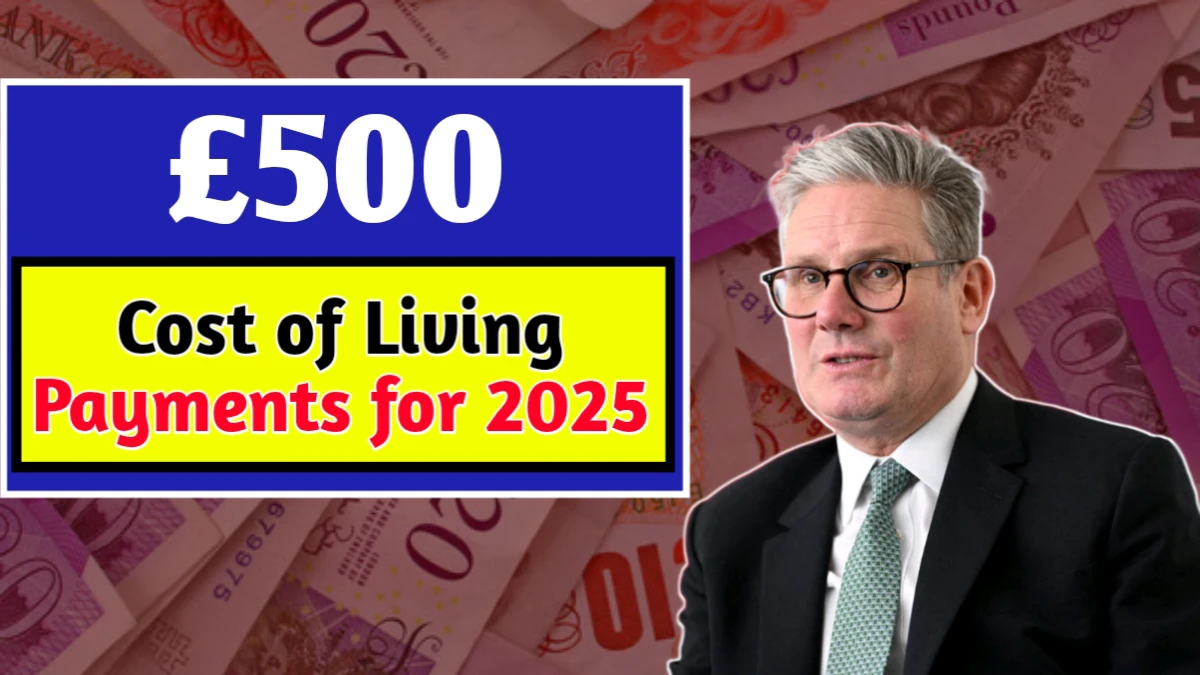The UK government has confirmed a £500 cost of living support payment for 2025, aimed at helping households cope with rising expenses. With inflation affecting groceries, energy, and rent, this payment targets vulnerable groups such as pensioners, low-income families, and carers. The Department for Work and Pensions (DWP) will issue payments automatically in three phases throughout the year to provide steady financial relief.
What Is the £500 Cost of Living Payment?
The £500 payment is part of the UK government’s ongoing effort to support households most affected by rising living costs. It is intended for groups facing the greatest financial pressures:
- Pensioners living on fixed incomes
- Low-income families with children
- Disabled individuals and carers with high energy or medical-related costs
The payment is designed to help cover essential expenses like food, utilities, and housing, ensuring immediate financial relief.
Overview
| Feature | Details |
|---|---|
| Organization | Department for Work and Pensions (DWP) |
| Program Name | £500 Cost of Living Payment |
| Country | United Kingdom |
| Total Amount | £301–£500 (phased payments) |
| Payment Schedule | Three phases: Spring, Summer, Autumn 2025 |
| Target Groups | Low-income families, pensioners, disabled individuals |
| Additional Support | Warm Home Discount, Household Support Fund |
| Official Website | gov.uk |
The payment is automatic, so no application is needed. Funds are deposited directly into recipients’ bank accounts to avoid delays and ensure timely support.
How the Payment Works
The DWP will deposit funds automatically for eligible recipients. The phased approach spreads the support throughout the year rather than giving a single lump sum, helping households manage costs steadily.
Payment Schedule
| Phase | Dates | Amount |
|---|---|---|
| Phase 1 | March–May 2025 | £301 |
| Phase 2 | July–August 2025 | Up to £200 |
| Phase 3 | October–December 2025 | Final installment before Christmas |
This schedule ensures households receive consistent support throughout the year, easing financial pressure during key periods.
Eligibility Criteria
Eligibility depends on benefits, income, and household circumstances. Key groups include:
- Benefit recipients: Housing Benefit, Income Support, Universal Credit, Pension Credit
- Job seekers and disabled individuals: Income-based JSA, Income-related ESA, Attendance Allowance, PIP, DLA
- Families with children: Child Tax Credit or Working Tax Credit recipients
- Carers and high-energy households: Those providing care or with medical-related high energy needs
Eligible recipients do not need to apply, but ensuring correct bank details are recorded with the DWP is essential to avoid delays.
Receiving Your £500 Payment
To ensure smooth processing, recipients should:
- Verify bank account information – make sure DWP records are up-to-date
- Notify changes – inform DWP promptly of any personal or financial updates
- Monitor accounts – check bank statements during the payment periods
- Contact DWP if delayed – reach out promptly if payments are missing
The automated system helps reduce stress for those already facing financial challenges.
Additional Support Alongside the £500 Payment
Other government programs provide extra help for households struggling with rising costs:
- Warm Home Discount: Assistance with electricity bills for low-income families
- Household Support Fund: Local authority grants covering essentials like heating, groceries, and basic necessities
Together, these programs create a comprehensive safety net, helping households manage essential expenses.
Impact of the £500 Payment
Beyond financial aid, the £500 cost of living payment offers:
- Reduced financial stress for low-income families
- Support for pensioners and disabled individuals on fixed incomes
- Assistance with essential expenses like food, utilities, and heating
- Consistent support through phased payments, preventing sudden financial strain
This program demonstrates the government’s commitment to helping vulnerable households maintain stability amid rising living costs.
